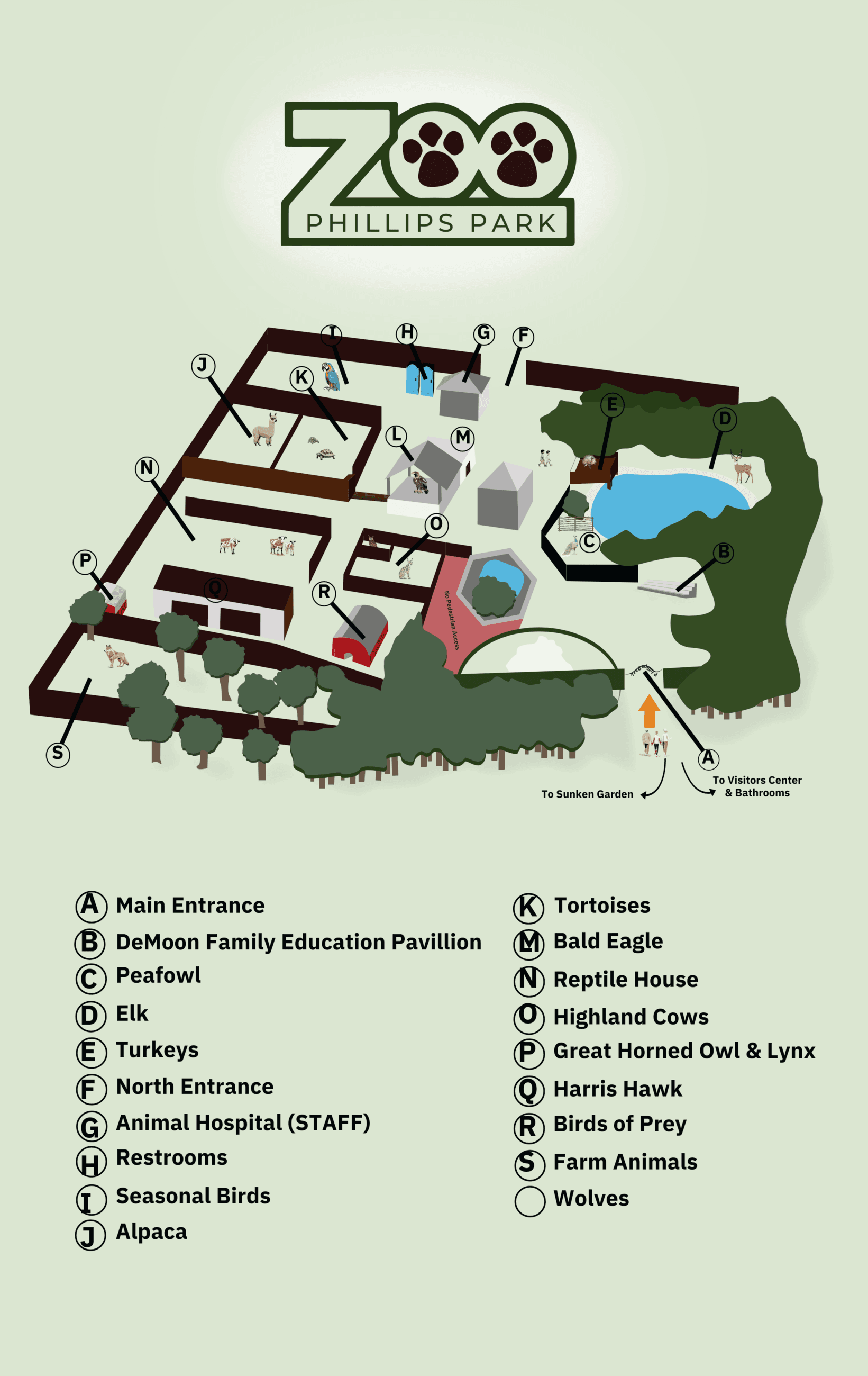Zoo Map

A. Main Entrance
B. DeMoon Family Education Pavilion
A stone pavilion space for educational programs.
C. Peafowl
Male peafowl are called peacocks, while female peafowl are called peahens. In the wild, they live in deciduous tropical rain forests.
D. Elk
A beautiful view of the elk habitat.
E. Turkeys
Turkey vultures are scavengers and play an important part in cleaning up the ecosystem.
F. North Entrance
G. Zoo Office and Animal Hospital (Staff Only)
This is a staff only space for vet exams and zookeeper responsibilities such as planning, record-keeping, and meetings.
H. Restrooms
I. Seasonal Birds
Our macaw and aracari (a type of toucan) can be found here on nice summer days (weather dependent). These birds are brightly colored and very intelligent.
J. Alpaca
K. Tortoises
Seasonally, our various tortoise species can be found strolling and grazing the grasses of these yards, located across from the reptile house.
M. Bald Eagle
The bald eagle was chosen as the emblem of the United States of America in 1782 because of its long life, great strength, and majestic looks.
N. Reptile House
Reptiles are found on every continent expect Antarctica. The Reptile House and adjacent tortoise yards (seasonal) are home to some of these unique animals.
O. Highland Cows
P. Great Horned Owl and Lynx
These owls do not have actual horns, but instead have tufts of feathers that resemble horns. The Eurasian Lynx are one of four "Lynx" species. Although they are not native to the United States, their cousins, the bobcat and Canada Lynx, can be found in North America.
Q. Harris Hawk
R. Birds of Prey
Hawks, owls, and falcons reside in these habitats. These birds have sharp beaks and talons to help them catch prey.
S. Farm Animals
The barn yard has chickens, turkeys, goats, and miniature cattle. These animals are considered "domestic" species, just like cats and dogs.